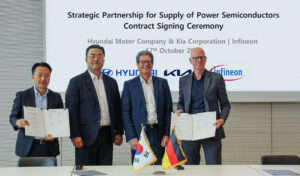You must have heard about Turbo, Bi-Turbo, Twin-turbo and the technology behind them like TSI, T-gdi! Ever wondered how these turbos work?
To understand the working of a turbo, you have to understand how an engine works. Think of an engine as a very large pump that sucks air and fuel into a cylinder, compresses it and combusts it before pumping out the exhaust gases. So, to extract more power from an engine, you need to burn more fuel more quickly. Getting more fuel is usually as simple as turning the tap up but if you won’t give more air, that extra fuel is useless. Why? A cylinder is limited by how much air it can breathe by its size or displacement. Historically, when engineers wanted more air to mix with fuel, they needed a bigger cylinder. There was “no replacement for displacement!”. Then, in 1905, a Swiss engineer, named Alfred Buchi, came up with a replacement for displacement when he used the exhaust gases of an engine to power up a compressor that then fed denser air into the combustion chamber. Then more air could get more fuel to get more boost. Then, turbos were quickly adopted by the aeronautical industry because at 20,000ft, the air is almost half as dense so the engine would lose about half as much power. Turbos restored engine pressure back to sea level pressure, this is called turbo normalizing. When a turbo is used to exceed that pressure, that’s called “TurboCharging”.
So, how does all this work? As the engine expels exhaust gases, the exhaust gas is piped over a turbine, it spins like a pinwheel and the exhaust comes out of the car. Now, that turbine is connected to an impeller on the other side of the turbo so it spins along with it. As it spins, it sucks in a lot of air from an intake and then shoots it through an outlet into the car’s intake manifold. This air is denser so it has more oxygen which obviously means, it can burn more fuel quickly producing more power. To keep that charged air from going back into the turbo when the driver lifts off from the pedal, a blow-off valve is placed to release the pressure letting the air back into the atmosphere.
Now, there has to be some catch right? Yes, turbocharging creates a lot of heat. The turbine side (hot side) always has blazing hot gases passing through it, making it burn red hot. The heat produced makes air lose density but the whole point of forced induction is to get denser air right? There are a few ways to do this. The most popular and simple way is, with an intercooler. The intercooler sits between the turbo and the engine. The air passes through channels with cooling fins. The cool air from outside passes over the fins, absorbs the heat and reduces the temperature. So a turbocharger is like a compressor, why not get the biggest turbo you can find then? It’s not that easy. If the turbo is too big, it takes a long time for the exhaust to get it spinning fast enough to compress the air. That’s why the time between pressing the accelerator and feeling the boost is called ‘lag’.
In bigger engines, engineers solve this problem by using 2 small turbos to push more air than one large one. While we think of twin-turbos as a separate category but there are multiple ways to put 2 turbochargers on an engine. Parallel turbocharging, sequential turbocharging and 2 stage turbocharging. The earlier ones faced one or the other challenges but if you want the quick spool time of a small turbo, a power of a big one, a sequential turbo is the solution. While a parallel turbo uses equally sized turbos working 100% of the time, sequential systems use a little turbo that spools up quickly until another larger turbo gets the time to spool up. This method alleviates turbo lag and provides a much smoother power gain. To control the flow of exhaust to the correct turbo at the right rev range, a series of bypass valves opens and closes at just the right moment, ensuring the proper turbo is getting spooled at the proper time. Cars like Supra mark 4 and Mazda FDRX7 use the sequential turbo systems and hence, ruled the 90s.
Turbocharging is a perfect example of performance technology that has trickled down to the rest of the market. The 80s and 90s paved the way for modern turbocharging. Now, the Indian market is seeing many small capacity turbocharged engines even in family hatchbacks like Grand I10 Nios and Altroz. That means, sometimes, even normal drivers can have a little bit of fun when they want to.



